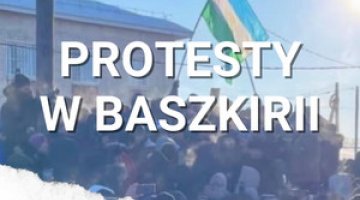Russia is massing forces for a new offensive. Day 347 of the war

Russian forces have intensified operations on the border of the Kharkiv and Luhansk oblasts. They are continuing to press Ukrainian positions on the eastern bank of the Oskil river, and between the western bank of the Zherebets river and the border of the oblasts. They are aiming to reach the line of the Zherebets on the border of the Donetsk and Luhansk oblasts, where they have succeeded in pushing the Ukrainian forces away from Kreminna. According to the Financial Times, Western reconnaissance data provided to Ukraine indicates that a new Russian offensive could begin in the area between Kreminna and Lyman within the next ten days. Reports that new enemy forces are massing there have been confirmed by local Ukrainian sources.
On both sides of the Donetsk-Donbas canal, fighting continues for control of the Bakhmut-Kostiantynivka road. The main Russian offensive is headed for Chasiv Yar, through which runs the defenders’ line of supply for Bakhmut – the last one open to them, although it remains difficult for them to use due to the Russian shelling. Fighting is also continuing in the southern, eastern and northern parts of the town, as well as in the villages north of it; in Paraskoviivka Ukrainian forces are preventing Russian forces from exiting onto the M03 main road towards Sloviansk. However, they themselves can no longer use it due to the ongoing fighting and the cutting of the road leading to the main road on the northern side of Bakhmut. The defenders reported repelling further attempts at Russian attacks south and east of Siversk, in the Avdiivka area, and in a wide arc west of Donetsk. Meanwhile, Russian activity on the outskirts of Vuhledar has decreased.
The Ukrainian authorities in Mariupol report a significant strengthening of Russian forces in and around the city. Within a week, the size of the enemy’s numbers there was expected to rise by 10,000–15,000 and reach 30,000 troops. The new forces will reach Mariupol by sea. The 6 February transport included eight multiple launch rocket systems and two S-300 air defence systems.
The Russians continued rocket attacks on the hinterland of the Ukrainian forces in the Donbas, with the Kramatorsk and Kurakhove areas as targets, and on 5 February they also struck Kharkiv. Russian artillery and air forces continued to shell and bomb the positions and hinterlands of Ukrainian forces along the contact line and in border areas, although the number of shelling attacks has dropped to a few dozen per day. Kherson and its environs, as well as the Nikopol and Ochakiv areas, are still under constant attack. Ukrainian sabotage operations have targeted a fuel base, as well as the plants in the Belgorod oblast that produce the metal structures for use in rebuilding the destroyed span of the Crimean bridge.
The US Department of Defense has unveiled details of a new military support package worth a total of $2.175 billion. The Ukraine Security Assistance Initiative (USAI) includes $1.75 billion worth of supplies, including GLSDB (Ground-Launched Small Diameter Bomb) kits for HIMARS launchers, two ‘fire sections’ of the HAWK air defence system (most likely four launchers), anti-aircraft guns of an unspecified type with ammunition, also unspecified equipment for integrating Western air defence systems with the Ukrainian system, anti-drone systems, four radar stations for detecting air targets, and 20 artillery radars. The $425-million US Presidential Drawdown of Security Assistance (PDA) pool is to include more GMLRS guided missiles for HIMARS launchers, 181 MRAP vehicles, 155-mm artillery ammunition and 120-mm mortar grenades, 190 12.7mm machine guns with ammunition and anti-drone equipment, 250 Javelin anti-tank guided missiles, and 2000 single-use hand-held anti-tank grenade launchers. For the first time, the Pentagon failed to mention the number of artillery munitions it will supply.
Ukraine’s defence minister Oleksiy Reznikov said he hoped that at the next meeting of the so-called Ramstein group on 14 February, the countries supporting Ukraine would give precise information on the number of tanks they intend to transfer to Kyiv, as well as the planned delivery date. On February 6, the training of Ukrainian Leopard-2 tank crews is to begin ‘abroad’ (in Poland, and most likely in Germany as well). According to Reznikov, talks on supplies of spare parts and the maintenance and repair of the tanks are still underway. The prime minister of Portugal has also announced negotiations on obtaining components from Germany for the Leopards scheduled for delivery to Ukraine (expected by the end of March), although the final number of tanks that Lisbon plans to transfer is still unknown. The first Leopard-2A4 from Canada has arrived in Poland (Ottawa has pledged to deliver four tanks).
The commander of the Ukrainian Air Force, General Mykola Oleshchuk, has announced the departure for training of the soldiers who will operate the SAMP/T-Mamba air defence systems, after France and Italy finally resolved the matter of transferring the systems in this version. The crewmen are expected to return to Ukraine in the spring along with the new weapons.
On 5 February Davyd Arakhamia, the head of the Servant of the People party, confirmed that a reshuffle had been agreed upon at a closed meeting of the parliamentary group. Defence minister Oleksiy Reznikov is to step down from his post; he will be replaced by the current head of military intelligence (HUR) Kyrylo Budanov. The HUR will now be headed by Roman Mashovets, who served in the HUR’s special operations section in the past. He is a co-organiser of the special operations forces, and has been one of the deputy heads of the President’s Office since April 2020. The post of interior minister, which has been vacant since the death of Minister Denys Monastyrsky in a helicopter crash, is to be filled by former National Police chief Ihor Klymenko, while the incumbent Vasyl Malyuk will remain head of the Security Service of Ukraine. Arakhamia stressed that the personnel changes were guided by the idea that ministries responsible for state security should be entrusted not to politicians, but to experienced officers. On 6 February, Arakhamia said there would be no personnel changes at the Ministry of Defence this week, with regard to Reznikov’s participation in the next meeting of the Ramstein group.
More corruption scandals are being revealed. On February 3, the Prosecutor General’s Office reported that one of the deputy defence minister’s advisors is suspected of embezzling 1.7 billion hryvnias ($45 million) in funds for purchases for the armed forces. On the same day, the SBU detained customs officers from the Odesa and Chernivtsi oblasts; they are suspected of extorting bribes ($500–700) to issue documents allowing humanitarian aid for the armed forces to enter Ukraine.
On 4 February, the Interior Ministry relayed that recruitment for its volunteer assault squads had met high demand; according to preliminary data, more than 3000 people have declared their readiness to serve. On 6 February, Ukraine’s President Volodymyr Zelensky referred a draft law to parliament on extending martial law and general mobilisation for a further 90 days.
Commentary
- Reports coming out of the areas of military operation indicate that Russia is preparing to escalate its attacks in two directions, eastward and southward. At the same time, reports from Mariupol do not confirm whether the forces arriving there will reinforce the Russian grouping in Zaporizhzhia or Donetsk oblast. It is unclear whether this represents preparation for an offensive comparable to that observed in the early stages of the war, which was dominated by manoeuvring operations. It is also possible that, following the pattern of current operations, the attempt to break through Ukrainian defences will involve a strike deep into the defenders’ grouping, which will only force them to withdraw to their next line of defence and further exhaust their potential in prolonged positional fighting. Indeed, the Russian forces amassed in Ukraine – according to recent assessments by Ukrainian military intelligence there are 326,000 military personnel in the country – should still be considered too few for a clash with the Ukrainians (who may number up to one million troops in total).
- The defence minister’s resignation appears to be a foregone conclusion, although it is likely that Reznikov will still represent Ukraine at the Ramstein meeting scheduled for 14 February. The successive cases of corruption and fraud at the ministry which have been revealed since late January, as well as the resignations of procurement officials, have not only severely damaged his image, but also called the effectiveness of the control bodies into question. Most likely, his attempts to calm the atmosphere around the ministry – such as his announcement of the creation of an anti-corruption body in which social activists would participate, the establishment of a specialised department to inspect the ministry’s activities, or the partial disclosure of defence procurement data based on a separate military electronic procurement system – proved insufficient to maintain his position.
- If, as expected, the former head of military intelligence takes over the defence ministry, this would be the most significant change in personnel since the war began. Budanov enjoys the confidence of the Ukrainian president, has direct access to him, and his track record in directing military intelligence operations has weakened Russian forces very effectively. His great assets are his recognition in the international community and his good contacts with representatives of Western secret services; that will make it easier for him to pursue his military policy goals, especially obtaining further supplies of armaments and military equipment. We should also expect him to undertake far-reaching personnel replacements in the ministry and make organisational changes designed to make it more difficult to run further corruption schemes. Budanov will also retain his influence over the operation of the military intelligence, which is subordinate to the head of the ministry.




